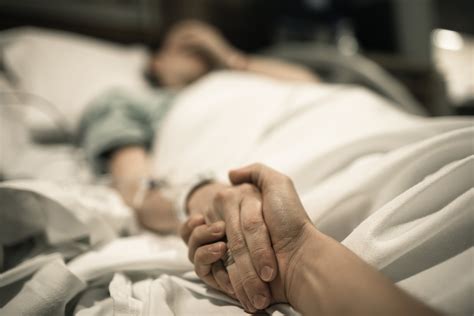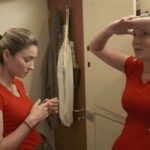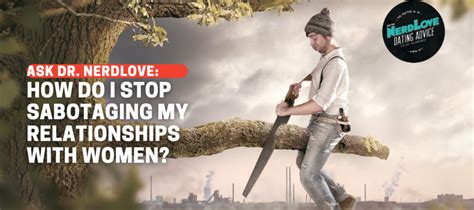
Nurses are sharing accounts of unexplained phenomena witnessed around dying patients, ranging from deathbed visions to unusual energy shifts, prompting discussions about the potential mysteries surrounding the end-of-life experience.
Across various online platforms, nurses are recounting their experiences with dying patients, revealing a spectrum of phenomena that defy conventional explanation. These anecdotes, shared anonymously and openly, offer a glimpse into the enigmatic events that some healthcare professionals observe during the final moments of life. The phenomena include deathbed visions, where patients describe seeing deceased loved ones; unexplained energy surges or shifts in the room; and patients accurately predicting their own time of death. While these accounts are not scientific evidence, they stimulate conversations about the potential spiritual or psychological aspects of death.
One of the most frequently reported experiences is the phenomenon of deathbed visions. Nurses describe patients, often in their final hours or days, exhibiting lucidity and claiming to see or interact with deceased family members or friends. “They might say, ‘Oh, there’s my mom,’ even if their mom has been deceased for years,” shared one nurse. These visions reportedly bring comfort and peace to the dying, easing their transition. The content of these visions varies, but the common thread is the appearance of familiar and comforting figures from the patient’s past. Nurses often find themselves trying to reconcile these experiences with their understanding of the physical processes of dying. Skeptics suggest that these visions could be hallucinations caused by medication, dehydration, or brain changes, but nurses who witness them regularly often believe there is more to the story.
Another frequently reported phenomenon is a sudden surge of energy observed in patients who are otherwise weak and nearing death. This energy boost often occurs shortly before death and can manifest as increased alertness, the ability to speak clearly after being nonverbal, or even the physical strength to sit up or move. Nurses have described patients who have been unresponsive for days suddenly becoming coherent and communicative for a short period. “It’s like they get this burst of energy right before they pass,” explained one nurse. This sudden change can be both surprising and comforting for family members who may have been preparing for imminent death. The reasons behind these energy surges remain unclear, with some speculating that they could be related to hormonal changes or neurological activity.
Some nurses also report instances where patients accurately predict the time of their own death. These predictions are often expressed as a specific day or time, and nurses have been struck by the accuracy with which these predictions come to pass. “I’ve had patients tell me they were going to die on a certain day, and they were right,” one nurse recounted. These predictions are often accompanied by a sense of acceptance and readiness for death, adding to the mystery. Critics may argue that these could be coincidences or the result of subtle cues the patient picks up from medical staff, but for nurses who experience them firsthand, they are powerful and thought-provoking events.
The sharing of these experiences is not without controversy. Skeptics argue that these phenomena can be explained by physiological or psychological factors associated with the dying process. Hallucinations, delirium, medication side effects, and the psychological needs of the dying are often cited as potential explanations. However, nurses who share these stories often maintain that these explanations fall short of fully accounting for what they witness. They emphasize the consistency and specificity of the experiences, as well as the emotional impact they have on both the patient and their families.
The discussion around these phenomena highlights the complex and multifaceted nature of death and dying. While medical science focuses on the physical aspects of death, these anecdotal accounts suggest that there may be other dimensions to the experience that are not yet fully understood. The nurses who share these stories are not necessarily advocating for specific beliefs or theories, but rather seeking to share their observations and open a dialogue about the potential mysteries surrounding death.
The value of sharing these experiences lies in their ability to foster empathy and understanding for the dying and their families. By acknowledging the possibility of unexplained phenomena, healthcare professionals and loved ones can approach the end-of-life with greater sensitivity and openness. It can also provide comfort to those who are grieving, knowing that their loved one’s final moments may have been filled with more than just physical decline.
Furthermore, the sharing of these anecdotes can contribute to ongoing research into the psychological and spiritual aspects of death. While anecdotal evidence is not scientific proof, it can provide valuable insights and directions for future studies. Researchers are increasingly interested in exploring the potential role of consciousness, spirituality, and the mind-body connection in the dying process.
These stories also underscore the importance of compassionate care for the dying. Nurses and other healthcare professionals play a vital role in providing comfort, support, and dignity to patients in their final moments. By being attentive to their patients’ experiences and needs, they can help to create a more peaceful and meaningful end-of-life experience. This includes being open to the possibility of unexplained phenomena and providing a safe space for patients and families to share their experiences without judgment.
The accounts from nurses also serve as a reminder of the limits of current medical knowledge. While science has made great strides in understanding the physical processes of death, there are still many aspects of the experience that remain a mystery. By acknowledging these limitations, healthcare professionals can approach death with humility and a willingness to learn from the experiences of their patients.
The sharing of these experiences also helps to normalize conversations about death and dying. In many cultures, death is a taboo subject, and people are often uncomfortable discussing it openly. By sharing personal stories and experiences, nurses and others can help to break down these barriers and encourage more open and honest conversations about the end-of-life.
In conclusion, the experiences shared by nurses about unexplained phenomena witnessed around dying patients offer a compelling glimpse into the potential mysteries surrounding the end-of-life. While these accounts are not scientific proof, they provide valuable insights into the psychological, spiritual, and emotional aspects of death. By sharing these stories, nurses are fostering empathy, promoting open dialogue, and encouraging further research into the complex and multifaceted nature of death and dying. These accounts remind us of the importance of compassionate care, the limits of current medical knowledge, and the need to approach death with humility and openness.
Frequently Asked Questions (FAQ)
1. What are deathbed visions, as reported by nurses?
Deathbed visions are experiences reported by nurses where dying patients claim to see or interact with deceased loved ones. Patients often describe these visions with lucidity, expressing comfort and peace as they recognize and communicate with deceased family members or friends. These visions vary in content but consistently involve familiar, comforting figures from the patient’s past. For example, a patient might say, “Oh, there’s my mom,” even if their mother has been deceased for many years. While some attribute these visions to hallucinations caused by medication or physiological changes, many nurses believe they represent a deeper, unexplained aspect of the dying process. These visions often bring a sense of closure and readiness for death to the patient, easing their transition.
2. What is the significance of sudden energy surges in dying patients?
Nurses have observed that some patients nearing death experience sudden energy surges, characterized by increased alertness, the ability to speak clearly after being nonverbal, or even physical strength to sit up or move. These surges typically occur shortly before death and can be unexpected, as patients who have been weak and unresponsive may suddenly become coherent and communicative. One nurse described it as, “It’s like they get this burst of energy right before they pass.” The exact causes of these energy boosts are unclear, with possible explanations including hormonal changes or neurological activity. For family members, these surges can be both surprising and comforting, allowing for a final moment of connection before the patient passes away.
3. How do nurses perceive patients accurately predicting their time of death?
Some nurses report instances where patients accurately predict the date or time of their death. These predictions are often specific and have been observed to come true with surprising accuracy. A nurse recounted, “I’ve had patients tell me they were going to die on a certain day, and they were right.” These predictions are often accompanied by a sense of acceptance and readiness for death, contributing to the sense of mystery surrounding the phenomenon. While critics suggest these could be coincidences or based on subtle cues from medical staff, nurses who witness these predictions often find them powerful and thought-provoking, suggesting a deeper awareness or connection to the dying process.
4. What are the skeptical perspectives on these unexplained phenomena?
Skeptics suggest that the unexplained phenomena reported by nurses can be attributed to physiological or psychological factors associated with the dying process. Hallucinations, delirium, medication side effects, and the psychological needs of the dying are often cited as potential explanations. For instance, medications can cause altered states of consciousness, leading to visions, while delirium can result in confusion and disorientation. Additionally, the psychological needs of a dying person, such as the desire to see loved ones or find peace, may manifest as visions or other experiences. Critics argue that these explanations, grounded in science and psychology, are sufficient to account for the phenomena without invoking supernatural or spiritual causes.
5. How do these accounts contribute to the understanding of death and dying?
The accounts shared by nurses provide valuable insights into the complex and multifaceted nature of death and dying. While medical science focuses on the physical aspects, these anecdotal accounts suggest there may be other dimensions to the experience, such as psychological, spiritual, and emotional aspects that are not yet fully understood. The sharing of these experiences helps to foster empathy and understanding for the dying and their families, and can lead to more compassionate care and open dialogue about end-of-life experiences. It also encourages further research into the potential role of consciousness, spirituality, and the mind-body connection in the dying process, ultimately contributing to a more holistic approach to understanding death and dying. Rewrite of the same article, expanded to 3000 words.
Nurses are sharing accounts of unexplained phenomena witnessed around dying patients, ranging from deathbed visions to unusual energy shifts, prompting discussions about the potential mysteries surrounding the end-of-life experience.
In the hushed environments of hospitals, hospices, and private homes, where life ebbs away, nurses often find themselves bearing witness to experiences that transcend the realm of conventional medical understanding. Across digital forums and professional circles, nurses are increasingly sharing accounts of unexplained phenomena observed in the presence of dying patients. These narratives, often laced with a sense of awe and wonder, encompass a range of occurrences, from deathbed visions and terminal lucidity to unexplained energy shifts and uncanny predictions of impending death. These accounts, while anecdotal, spark profound questions about the nature of consciousness, the boundaries of human experience, and the mysteries that may lie beyond the veil of mortality.
The collective sharing of these experiences isn’t simply about recounting isolated incidents; it’s about creating a space for dialogue, validation, and a deeper exploration of the human experience at its most vulnerable point. For many nurses, these phenomena challenge their scientific training and compel them to consider perspectives that extend beyond the purely physiological. The recurring themes and patterns emerging from these shared narratives invite a closer look at the potential for a more holistic understanding of death and dying.
Deathbed Visions: Encounters with the Departed
One of the most prevalent and compelling phenomena reported by nurses is that of deathbed visions. These visions typically involve patients, often in their final hours or days, exhibiting a heightened state of lucidity and claiming to see or interact with deceased loved ones. The descriptions provided by patients are often vivid and detailed, conveying a sense of profound connection and comfort.
“They might suddenly become very alert and call out the name of a parent or spouse who has passed away,” one nurse shared in an online forum. “They’ll describe the person in detail, saying things like, ‘Mom is here, and she looks so young,’ or ‘My husband is standing right there, smiling at me.'”
The content of these visions varies widely, reflecting the personal relationships and experiences of the dying individual. Some patients describe being greeted by a welcoming party of deceased relatives, while others report simply feeling the presence of a loved one, offering reassurance and guidance. Regardless of the specific details, the common thread is the sense of peace and acceptance that these visions seem to bring to the dying.
Skeptics often attribute these visions to hallucinations caused by medication, dehydration, or the physiological changes associated with the dying process. However, nurses who regularly witness these phenomena often argue that such explanations fall short of fully accounting for the complexity and consistency of the experiences. They point to the fact that many patients are completely lucid and coherent during these visions, exhibiting a clarity of mind that belies the physical deterioration of their bodies.
Moreover, the emotional impact of these visions on both the patient and their families is undeniable. Nurses report witnessing patients who were previously agitated and fearful become calm and serene after experiencing a deathbed vision. These visions can also provide immense comfort to grieving family members, offering them a sense of closure and the belief that their loved one is not alone in their final journey.
Terminal Lucidity: A Burst of Clarity Before the End
Another intriguing phenomenon observed by nurses is terminal lucidity, also known as paradoxical lucidity. This refers to the unexpected return of mental clarity and cognitive function in patients who have been suffering from severe dementia, Alzheimer’s disease, or other cognitive impairments. In these cases, patients who have been largely unresponsive or incoherent for months or even years suddenly regain their ability to communicate, recognize loved ones, and engage in meaningful conversations.
“I had a patient with advanced Alzheimer’s who hadn’t spoken a coherent sentence in over a year,” one nurse recounted. “The day before she died, she suddenly became completely lucid. She recognized her children, called them by name, and told them how much she loved them. It was an incredibly emotional experience for everyone involved.”
Terminal lucidity typically occurs shortly before death, often lasting for only a few hours or days. The exact cause of this phenomenon is not fully understood, but it is thought to involve a temporary surge of neurological activity that temporarily restores cognitive function.
While terminal lucidity can be a bittersweet experience for families, it offers a precious opportunity for connection and closure. It allows loved ones to say their goodbyes and express their feelings, knowing that their words are being heard and understood. For nurses, witnessing terminal lucidity can be a powerful reminder of the enduring human spirit and the resilience of the mind, even in the face of profound physical decline.
Energy Surges: A Final Burst of Vitality
In addition to deathbed visions and terminal lucidity, nurses also report observing unexplained energy surges in dying patients. These surges often manifest as a sudden increase in alertness, physical strength, or the ability to communicate after a period of decline.
“I’ve seen patients who were barely able to lift a finger suddenly sit up in bed and speak clearly,” one nurse shared. “It’s like they get this final burst of energy right before they pass.”
These energy surges can be surprising and even unsettling for both nurses and family members. They often occur in patients who are otherwise weak and frail, leading to speculation about the source of this sudden vitality. Some believe that it is related to hormonal changes or neurological activity, while others suggest that it may be a manifestation of the life force itself, rallying for one last stand before finally surrendering to death.
Regardless of the explanation, these energy surges can provide a moment of connection and closure for patients and their loved ones. They may allow patients to express their final wishes, say their goodbyes, or simply share a moment of intimacy with those they care about most.
Precognitive Dreams and Predictions: Sensing the Approaching End
Another intriguing phenomenon reported by nurses involves patients accurately predicting their own time of death. These predictions often take the form of precognitive dreams or visions, in which patients experience a sense of knowing when and how they will die.
“I had a patient tell me that she was going to die on her birthday,” one nurse recounted. “I didn’t think much of it at the time, but she passed away peacefully in her sleep on the morning of her birthday.”
These predictions are not always explicit; sometimes, patients simply express a sense of readiness or acceptance of death, indicating that they know their time is near. Nurses who have witnessed these predictions often describe being struck by the certainty and conviction with which they are delivered.
Skeptics may argue that these predictions are simply coincidences or the result of subtle cues picked up by the patient from medical staff. However, nurses who have experienced these phenomena firsthand often believe that there is something more profound at play, suggesting that patients may possess an intuitive sense of their own mortality.
The Role of the Nurse: Witness, Caregiver, and Advocate
Nurses play a critical role in the lives of dying patients, providing not only medical care but also emotional support, comfort, and companionship. They are often the first to witness these unexplained phenomena, and their accounts provide valuable insights into the mysteries surrounding death and dying.
For many nurses, witnessing these experiences can be deeply transformative, challenging their preconceived notions about the nature of reality and the limits of human understanding. It can also lead to a greater appreciation for the spiritual and emotional needs of dying patients and a commitment to providing more holistic and compassionate care.
Nurses also serve as advocates for their patients, ensuring that their wishes are respected and that they are treated with dignity and compassion in their final moments. This includes being open to the possibility of unexplained phenomena and creating a safe space for patients and families to share their experiences without judgment.
The Importance of Open Dialogue and Further Research
The sharing of these accounts by nurses is not intended to promote any specific beliefs or theories about death and dying. Rather, it is meant to encourage open dialogue and further research into the psychological, spiritual, and emotional aspects of the end-of-life experience.
While anecdotal evidence is not scientific proof, it can provide valuable insights and directions for future studies. Researchers are increasingly interested in exploring the potential role of consciousness, spirituality, and the mind-body connection in the dying process.
By fostering a more open and informed conversation about death and dying, we can better understand the needs of dying patients and provide them with the care and support they deserve. This includes being open to the possibility of unexplained phenomena and recognizing that there may be more to death than meets the eye.
The accounts shared by nurses serve as a powerful reminder that death is not simply a medical event but a profound human experience. By listening to their stories and learning from their experiences, we can gain a deeper understanding of the mysteries surrounding death and dying and provide more compassionate and meaningful care to those who are approaching the end of their lives. These stories contribute to the ongoing exploration of what it means to be human, especially in the face of mortality. They challenge conventional understandings and invite a broader, more inclusive perspective on the final chapter of life.
The sharing of these experiences also helps to destigmatize conversations about death and dying. In many societies, death is a taboo subject, avoided and feared. By bringing these experiences into the open, nurses are helping to normalize discussions about death, making it easier for people to talk about their fears, hopes, and beliefs surrounding the end-of-life. This can lead to more informed decision-making about end-of-life care and a greater sense of peace and acceptance for those who are facing death, either for themselves or for their loved ones. The collective narratives of nurses contribute significantly to shifting societal attitudes towards death, promoting a culture of openness, understanding, and support.
Moreover, these shared experiences can inform and enhance the training of healthcare professionals. By including discussions of these phenomena in nursing and medical education, future healthcare providers can be better prepared to recognize and respond to the psychological and spiritual needs of dying patients. This can lead to more compassionate and holistic care, improving the overall quality of life for those nearing the end of their lives. By integrating these anecdotal accounts into the curriculum, educators can foster a greater sense of empathy and understanding among students, encouraging them to approach death with sensitivity and an open mind.
The ongoing dialogue surrounding these unexplained phenomena also highlights the importance of interdisciplinary collaboration in end-of-life care. Healthcare professionals from various disciplines, including doctors, nurses, social workers, chaplains, and psychologists, can work together to provide comprehensive support to dying patients and their families. By sharing their unique perspectives and expertise, these professionals can create a more holistic and integrated approach to care, addressing the physical, emotional, spiritual, and social needs of the patient. Interdisciplinary collaboration ensures that all aspects of the patient’s well-being are considered, leading to a more dignified and peaceful end-of-life experience.
Finally, the exploration of these phenomena underscores the need for continued research into the nature of consciousness and the mind-body connection. While much is known about the physical processes of death, less is understood about the subjective experiences of dying patients. By employing rigorous scientific methods to investigate these experiences, researchers can gain a deeper understanding of the relationship between the mind, the body, and the dying process. This research can also help to develop new interventions to improve the quality of life for dying patients, such as therapies to reduce anxiety, promote spiritual well-being, and enhance communication with loved ones. Further investigation into the mysteries surrounding death can ultimately lead to more compassionate and effective care for those approaching the end of their lives.









